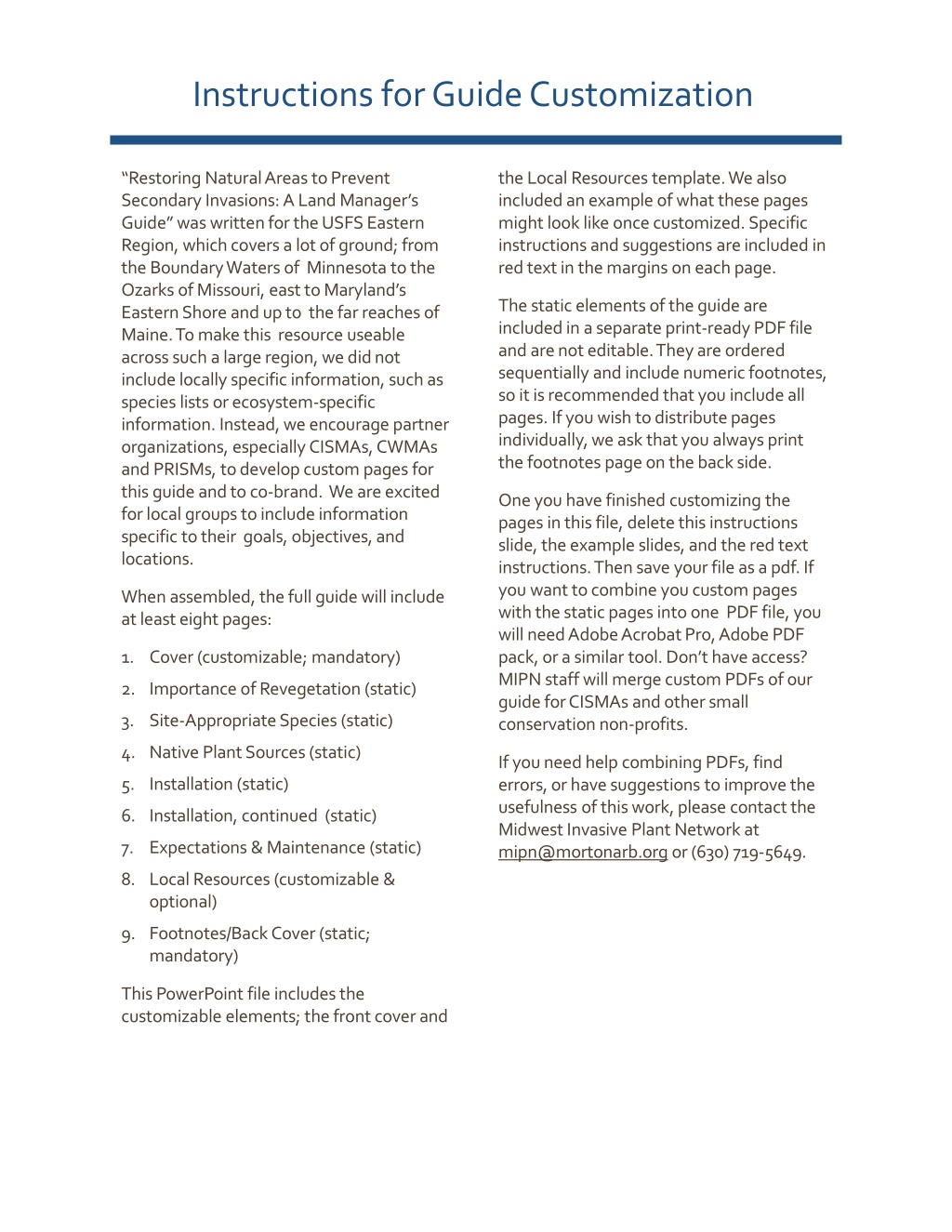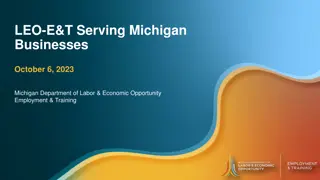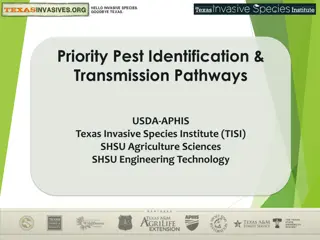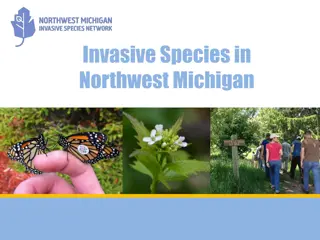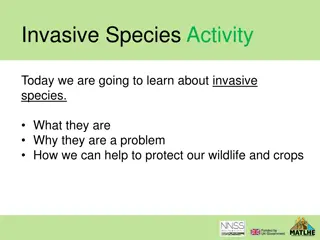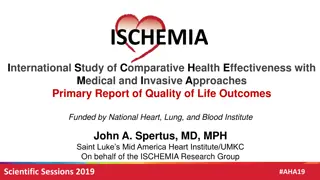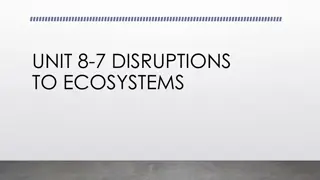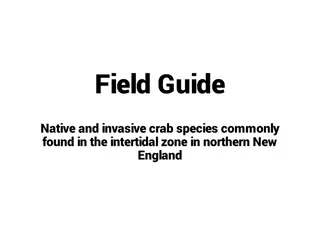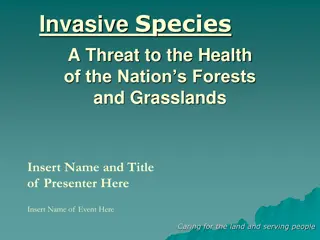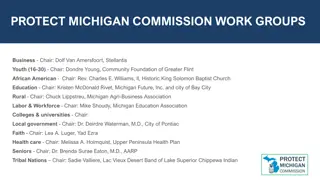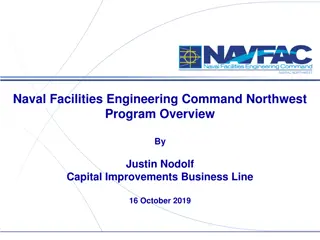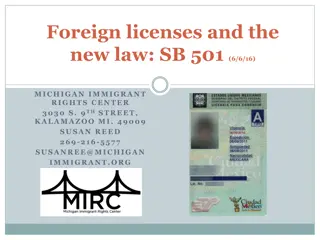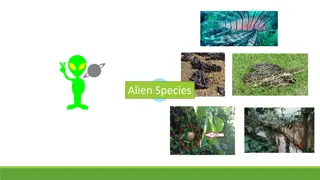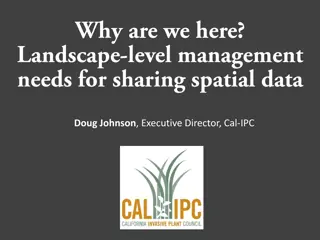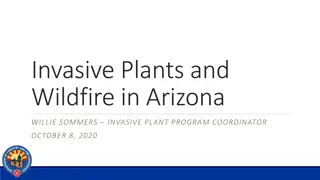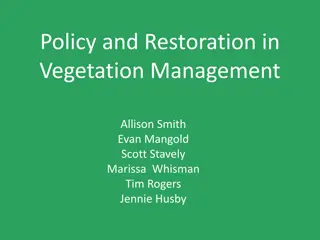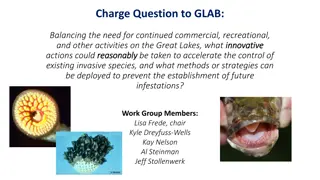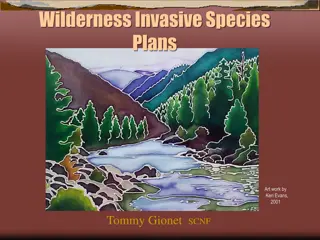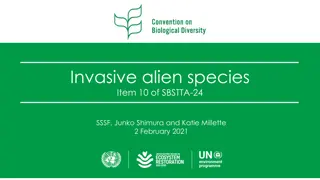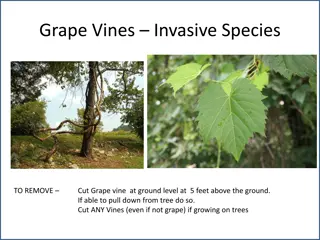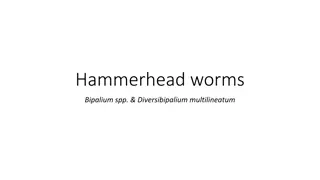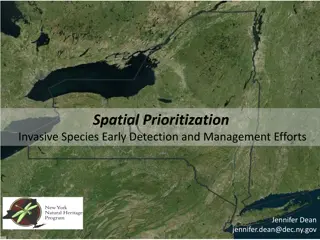Northwest Michigan Invasive Species Network Overview
The Northwest Michigan Invasive Species Network (ISN) is a Cooperative Invasive Species Management Area dedicated to managing invasive species in northwest Michigan's natural areas. Founded in 2005 and funded through grants and private donations, ISN collaborates with over 60 partners to address invasive species threats in Benzie, Grand Traverse, Leelanau, and Manistee Counties. Treatments focus on high-quality habitats to preserve the region's biodiversity.
Download Presentation

Please find below an Image/Link to download the presentation.
The content on the website is provided AS IS for your information and personal use only. It may not be sold, licensed, or shared on other websites without obtaining consent from the author.If you encounter any issues during the download, it is possible that the publisher has removed the file from their server.
You are allowed to download the files provided on this website for personal or commercial use, subject to the condition that they are used lawfully. All files are the property of their respective owners.
The content on the website is provided AS IS for your information and personal use only. It may not be sold, licensed, or shared on other websites without obtaining consent from the author.
E N D
Presentation Transcript
Instructions for Guide Customization Restoring Natural Areas to Prevent Secondary Invasions: A Land Manager s Guide was written for the USFS Eastern Region, which covers a lot of ground; from the Boundary Waters of Minnesota to the Ozarks of Missouri, east to Maryland s Eastern Shore and up to the far reaches of Maine. To make this resource useable across such a large region, we did not include locally specific information, such as species lists or ecosystem-specific information. Instead, we encourage partner organizations, especially CISMAs, CWMAs and PRISMs, to develop custom pages for this guide and to co-brand. We are excited for local groups to include information specific to their goals, objectives, and locations. the Local Resources template. We also included an example of what these pages might look like once customized. Specific instructions and suggestions are included in red text in the margins on each page. The static elements of the guide are included in a separate print-ready PDF file and are not editable. They are ordered sequentially and include numeric footnotes, so it is recommended that you include all pages. If you wish to distribute pages individually, we ask that you always print the footnotes page on the back side. One you have finished customizing the pages in this file, delete this instructions slide, the example slides, and the red text instructions. Then save your file as a pdf. If you want to combine you custom pages with the static pages into one PDF file, you will need Adobe Acrobat Pro, Adobe PDF pack, or a similar tool. Don t have access? MIPN staff will merge custom PDFs of our guide for CISMAs and other small conservation non-profits. When assembled, the full guide will include at least eight pages: 1. Cover (customizable; mandatory) 2. Importance of Revegetation (static) 3. Site-Appropriate Species (static) 4. Native Plant Sources (static) If you need help combining PDFs, find errors, or have suggestions to improve the usefulness of this work, please contact the Midwest Invasive Plant Network at mipn@mortonarb.org or (630) 719-5649. 5. Installation (static) 6. Installation, continued (static) 7. Expectations & Maintenance (static) 8. Local Resources (customizable & optional) 9. Footnotes/Back Cover (static; mandatory) This PowerPoint file includes the customizable elements; the front cover and
Restoring Natural Areas to Prevent Secondary Invasions A LAND MANAGER S GUIDE
Restoring Natural Areas to Prevent Secondary Invasions A LAND MANAGER S GUIDE
Northwest Michigan Invasive Species Network About Us The Northwest Michigan Invasive Species Network (ISN) is a Cooperative Invasive Species Management Area (CISMA) or Cooperative Weed Management Area (CWMA), and was founded in 2005. ISN reached its current form through the merger of the Grand Traverse Regional Invasive Species Network and the Northwest Michigan CWMA in 2012. ISN works directly with over 60 partners in Benzie, Grand Traverse, Leelanau, and Manistee Counties to manage populations of invasive species that threaten northwest Michigan shigh-quality natural areas. It is currently funded through grantsfrom the Great Lakes Restoration Initiative (GLRI), the US Forest Service (USFS), and the Michigan Invasive Species Grant Program (MISGP), as well as a few private donations. If your property has a population of invasive plants that fall into the criteria detailed above, ISN may (funding permitting) choose to treat the plants or do a cost-share treatment. Treatments are focused on high-quality habitats, which often rules out properties in northwest lower Michigan s cities, towns and municipalities. However, you never know until you ask! At the very least, ISN can give you recommendations on how to control the plants yourself or help you connect with experienced professionals in the region, including connecting you to resources that may help, such asNatural Resources Conservation Service (NRCS) programsthat offer cost-share to landowners. Go Beyond Beauty for wildlife, clean waters, and beautiful gardens For many people, a garden s purpose begins and ends with beauty. However, we believe it is possible to create beautiful spaces that transcend beauty alone. Did you know that many of the plants that are most invasive in local natural areas originally arrived as ornamental garden plants? You can prevent the introduction and spread of invasives by purchasing plants at local nurseries and through landscapers that have committed to not selling high-threat invasive ornamental plants. Let s make Northwest Michigan an example of natural beauty, wildlife habitat, healthy waters, and bountiful gardens that inspires across the state of Michigan and beyond! The Northwest Michigan Invasive Species Network invites all nurseries, landscapers, businesses, organizations, and concerned home/landowners that are located in Benzie, Grand Traverse, Leelanau, and Manistee counties to participate in Go Beyond Beauty. To find a current participant, visit www.habitatmatters.org/go-beyond-beauty.html CONTACT US 1450 Cass Road Traverse City, Michigan 49685 (231)941 - 0960 kgrzesiak@gtcd.org
